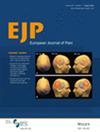Cryo-Induced Hypoalgesia: The Effects of an Acute Cryochamber Exposure on Pain Perception—A Randomised Controlled Cross-Over Trial
Abstract
Background
Whole-body cryotherapy (WBC) is a treatment that involves exposing the entire body to extremely cold temperatures and is used in therapeutic and sports scientific settings. Here, cryotherapy is often used to alleviate pain, but its underlying pain physiological effects are under-researched. This study aims to explore whether a 3-min cryochamber application results in cryo-induced hypoalgesia.
Methods
24 healthy male participants successfully conducted this randomised controlled crossover study consisting of a 3-min WBC (cryochamber at −87°C) and a 3-min control (ambient temperature) session. Pressure pain thresholds (PPT [Newton/cm2]) were measured at the rectus femoris, knee joint, deltoid muscle and sternum pre and post0, post5, post15 and post30.
Results
Results revealed a significant ‘condition’ × ‘time’ interaction (p < 0.001, η2partial = 0.280) for PPTTotal (pooled for one average value) with hypoalgesia observed after WBC (p < 0.001; pre: 77.0 ± 17.2, post0: 89.6 ± 18.6, post5: 83.6 ± 19.4, post15: 83.1 ± 18.2, post30: 80.8 ± 17.7) and no change following the control (p = 0.873; pre: 75.1 ± 18.8, post0: 75.3 ± 19.4, post5: 74.6 ± 19.2, post15: 75.7 ± 19.3, post30: 75.3 ± 19.1). The same pattern was observed for individual landmarks. Between-group differences were consistently observed, with higher values following the WBC. No significant ‘time’ × ‘intervention’ × ‘landmark’ interaction effect (p = 0.439) was found.
Conclusions
This study demonstrates that a three-minute cryochamber exposure induces robust hypoalgesia in healthy participants, as indicated by increased PPT, lasting up to 30 min but gradually declining over time.
Significance Statement
Whole-body cryotherapy significantly induces short-term hypoalgesia, with increased mechanical pain thresholds lasting up to 30 minutes. Compared to ambient temperature, cryotherapy provided greater pain relief across multiple body landmarks, with 82.6% of participants experiencing hypoalgesia. These findings highlight the potential of cryotherapy for pain management and support further research on its long-term efficacy and clinical applications.


 求助内容:
求助内容: 应助结果提醒方式:
应助结果提醒方式:


